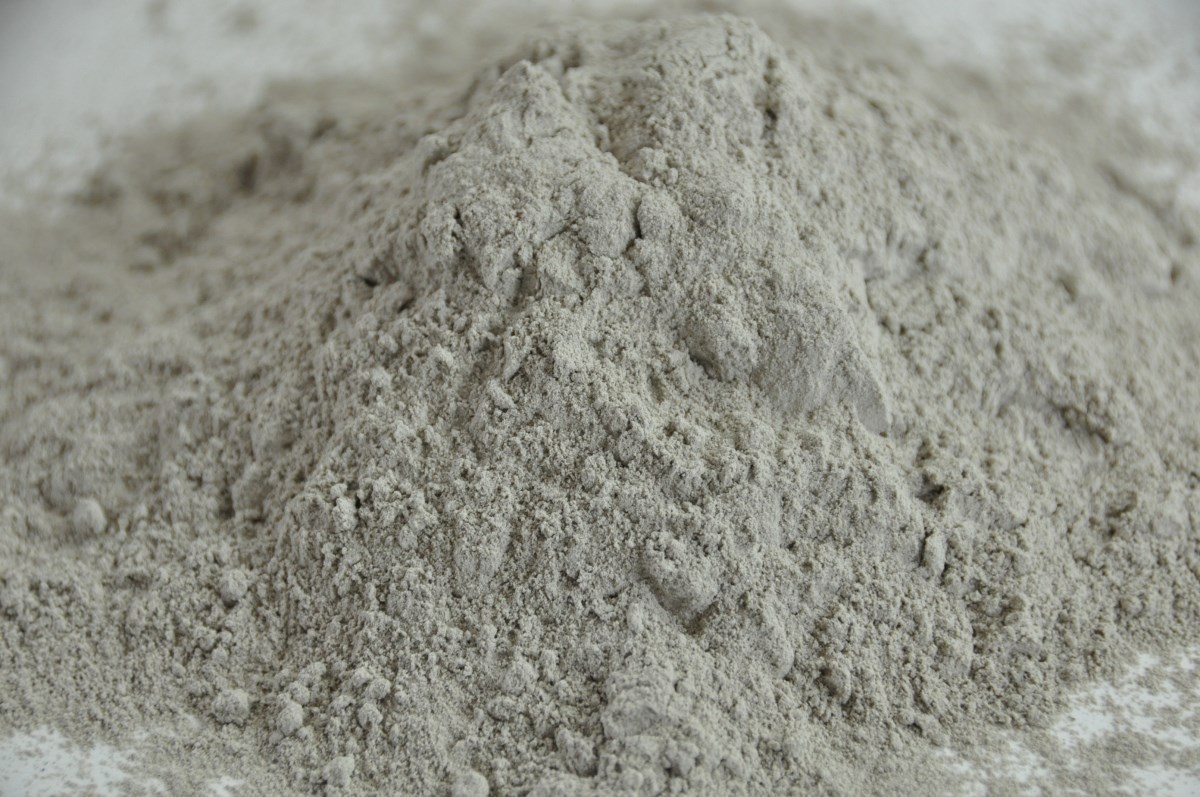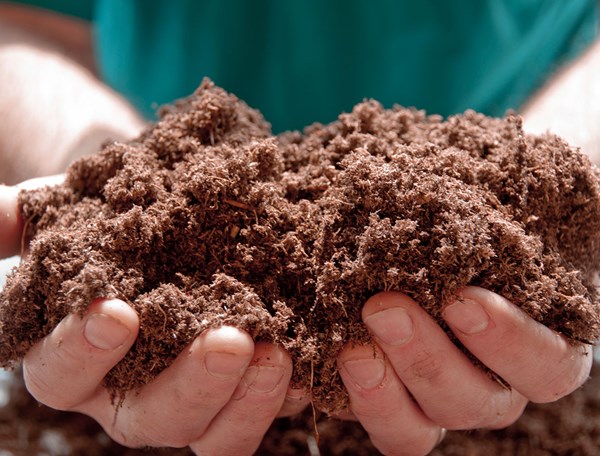Training Center
Calcitic vs Dolomitic Limestone
Thursday, September 7, 2023 | Troy Buechel
PDF version of this article: Calcitic vs Dolomitic Limestone

Powdered dolomitic limestone used in commercial growing media.
Limestone is often added to growing media to offset the acidity of certain components, such as peat moss and pine bark. The two main types of limestone are calcitic limestone and dolomitic limestone. Although both have similar effects, there are a few important differences.
Greenhouse growers know that to achieve optimum nutrient availability for plant growth, a growing medium's pH should be within 5.5-6.2, depending on the crops grown. The standard components in most growing media, peat moss and composted pine bark, have a pH of 3.5-5.0. The pH of a growing medium with these components is too low for crops; therefore, limestone must be added to increase the pH.
The amount and choice of limestone used to increase a growing medium's pH is a function of several factors, including the bulk density of the growing medium, the components used, and the pH requirements for most of the crops grown in the growing medium.
Once a crop is planted into the growing medium, factors such as the alkalinity of the water, the fertilizer(s) used, and the specific crops grown also affect the growing medium's pH and must be monitored and maintained by the grower throughout the crop cycle.
What are the impacts of the particle size of limestone?
When selecting a limestone source, the size of the particles dictates how fast the limestone will start to adjust the pH of the growing medium and how long it will last. Most growing media manufacturers use powdered limestone that has a texture similar to flour.
These fine limestone particles begin dissolving quickly after planting to adjust the growing medium's pH within a week (if it is wet) and will last for 2-4 months. This correlates well with the bench time for most greenhouse crops.
If the limestone particles are coarser and have the texture of salt, the limestone may take up to 2 months to begin adjusting the pH of the growing medium, but will last for over a year. This would not work for most greenhouse crops.
Calcitic lime vs dolomitic lime
The two most common forms of limestone incorporated into growing media are calcitic and dolomitic limestone:
- Calcitic limestone is calcium carbonate, and it neutralizes acids in the growing medium. It provides some calcium, but almost no magnesium. Calcitic limestone dissolves faster than dolomitic limestone so it quickly adjusts a growing medium's pH within one week, but it has a shorter residual effect of up to 1-2 months.
- Dolomitic limestone is a combination of calcium carbonate and magnesium carbonate and serves two purposes in the growing medium. It neutralizes acids in the growing medium and provides some additional magnesium and calcium for plant uptake. Dolomitic limestone dissolves slowly in the growing medium, resulting in longer-term pH adjustment (up to 2-4 months) and buffering to improve pH stability
Most commercial growing media manufacturers rely solely on dolomitic limestone and vary the particle size to control release rates. Premier Tech, however, uses a combination of both forms. Together, dolomitic and calcitic limestone create a more even and consistent growing medium pH.
When using both forms of limestone, better pH control can be achieved; calcitic limestone quickly releases and adjusts the growing medium's pH while dolomitic limestone slowly releases over the course of the crop, resulting in limited pH fluctuations during production.
Variable starting pH?
A growing media manufacturer only has control over the bulk density, components, limestone source, and particle sizes used. In general, growing media manufacturers will add limestone at a rate that will provide a pH of 5.5-6.2 once the unused growing medium's pH has stabilized in the package.
What is meant by "stabilized"?
Typically, a growing medium that is less than one month old with low moisture has an initial pH of 4.5-4.9. The limestone added to the growing medium is in a granular form and must dissolve in the water contained in the growing medium before it can raise the pH to the desired range.
The higher the moisture content, the faster it will rise. Once within the range, the true growing medium pH can be determined; however, most growing media are packaged at a moisture content between 45 - 55% by weight and the available water is far too low to activate the limestone in a reasonable length of time.
The most accurate way to determine the pH of the growing medium is to measure it 7-10 days after planting and thoroughly watering the crop.
For more information, contact your Premier Tech Grower Services Representative:
 |
 |
 |
 |
|---|---|---|---|
|
Ed Bloodnick |
Nathan Wallace-Springer |
Lance Lawson |
Victor Brantly |
 |
 |
 |
|
|
Troy Buechel |
Susan Parent |
Jose Chen Lopez |
PRO-MIX® is a registered trademark of PREMIER HORTICULTURE Ltd.
Related Articles
-
Criteria for Adjusting Lime Content of Growing Media
Growers may occasionally experience high pH problems with their growing media causing iron chlorosis in petunias and calibrachoa.

 Where to find our products
Where to find our products


